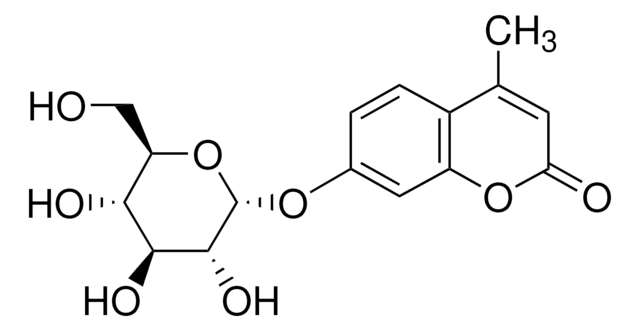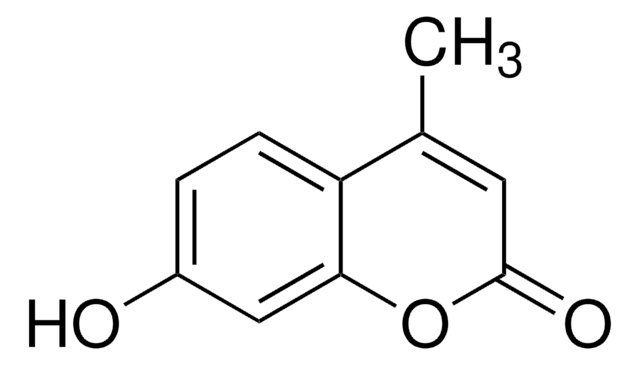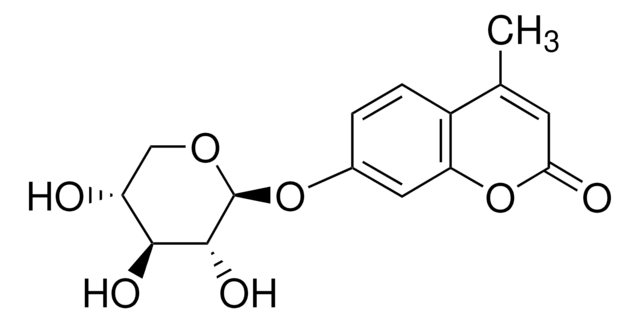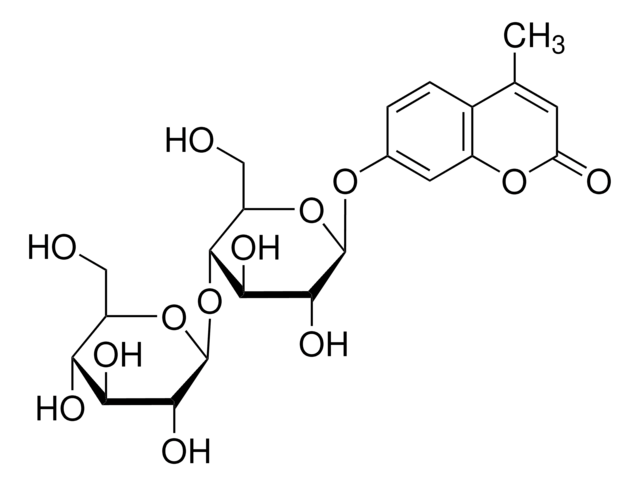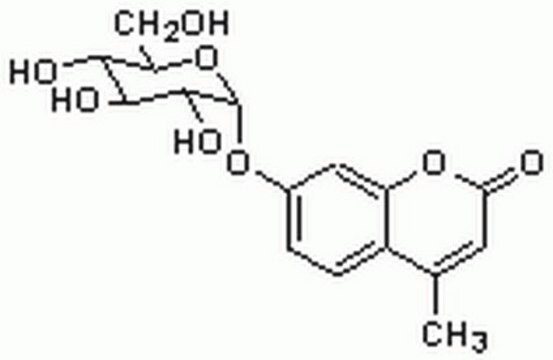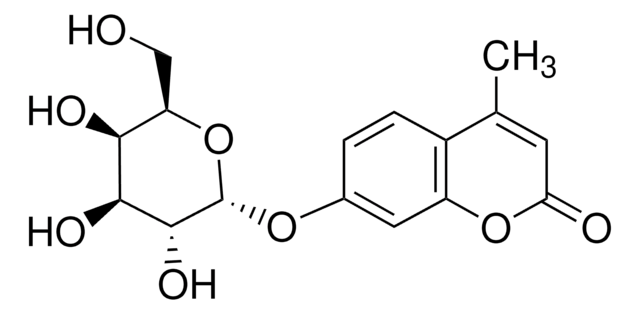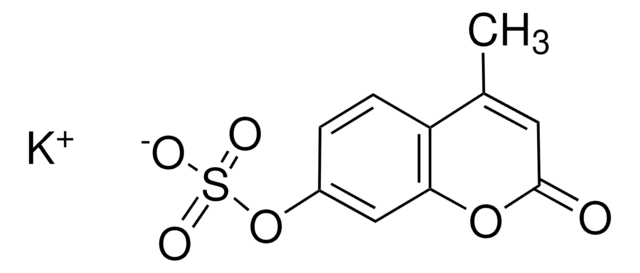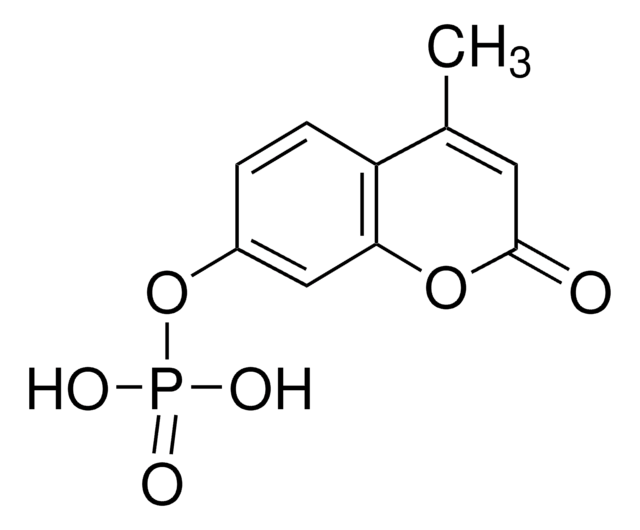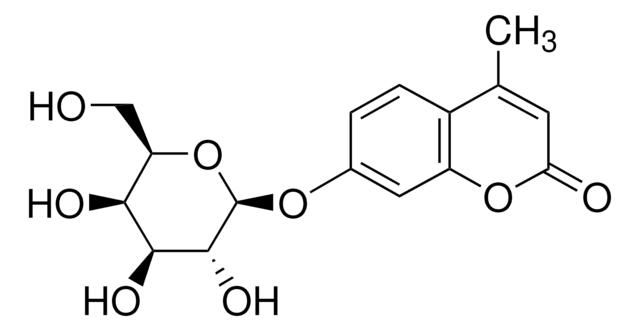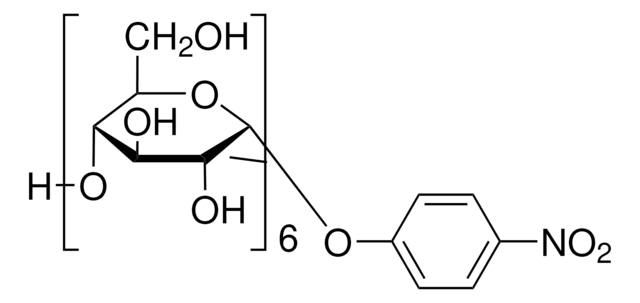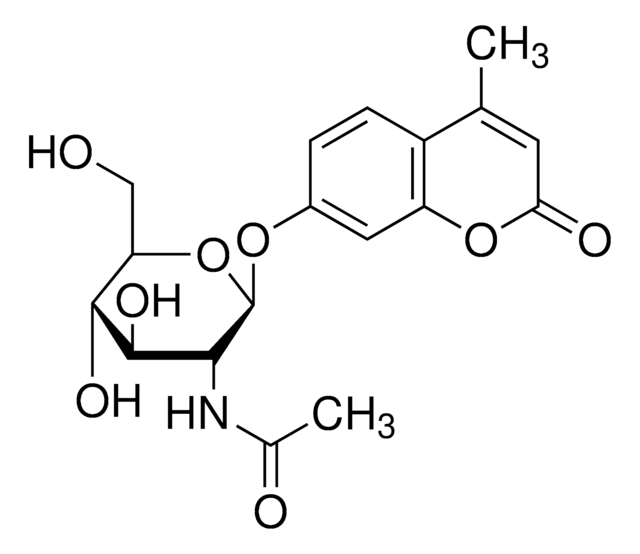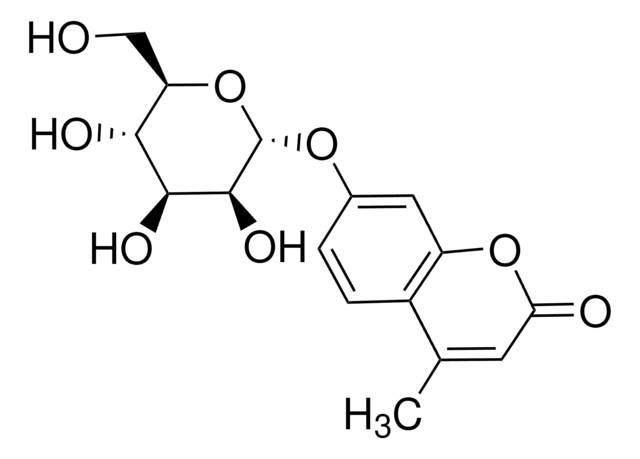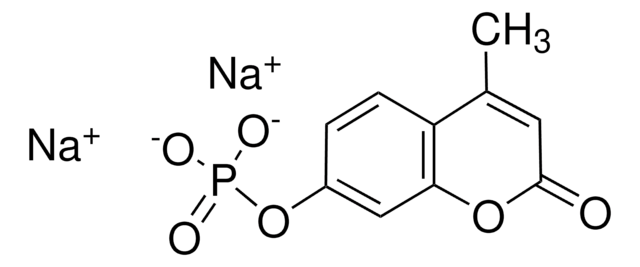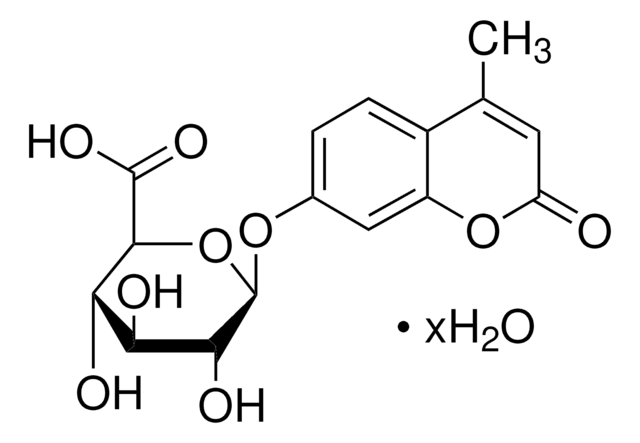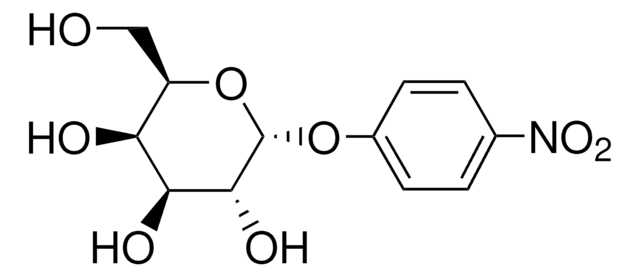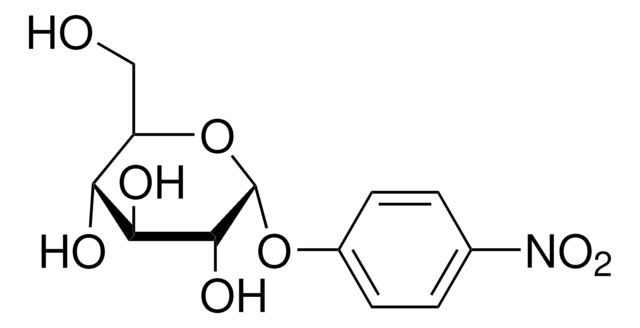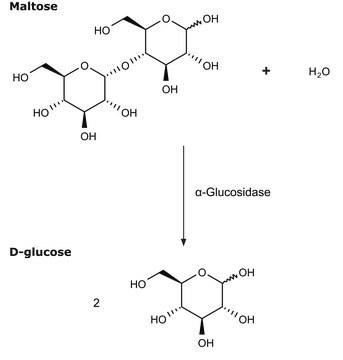69591
4-Methylumbelliferyl α-D-glucopyranoside
≥98% (TLC)
Synonym(s):
4-Methylumbelliferyl α-D-glucoside
About This Item
Recommended Products
description
α-glucosidase substrate
Quality Level
Assay
≥98% (TLC)
form
powder
solubility
DMSO: 50 mg/mL, clear, colorless to faintly yellow
fluorescence
λex 316 nm; λem 375 nm (Reaction product)
λex 317 nm; λem 374 nm (pH9.0)
λex 360 nm; λem 449 nm
λex 365 nm; λem 445 nm in 0.1 M Tris pH 8.0 (α-glucosidase)
storage temp.
−20°C
SMILES string
CC1=CC(=O)Oc2cc(O[C@H]3O[C@H](CO)[C@@H](O)[C@H](O)[C@H]3O)ccc12
InChI
1S/C16H18O8/c1-7-4-12(18)23-10-5-8(2-3-9(7)10)22-16-15(21)14(20)13(19)11(6-17)24-16/h2-5,11,13-17,19-21H,6H2,1H3/t11-,13-,14+,15-,16+/m1/s1
InChI key
YUDPTGPSBJVHCN-JZYAIQKZSA-N
Looking for similar products? Visit Product Comparison Guide
Related Categories
General description
Application
Packaging
Storage Class Code
11 - Combustible Solids
WGK
WGK 3
Flash Point(F)
Not applicable
Flash Point(C)
Not applicable
Personal Protective Equipment
Choose from one of the most recent versions:
Already Own This Product?
Find documentation for the products that you have recently purchased in the Document Library.
Customers Also Viewed
Our team of scientists has experience in all areas of research including Life Science, Material Science, Chemical Synthesis, Chromatography, Analytical and many others.
Contact Technical Service